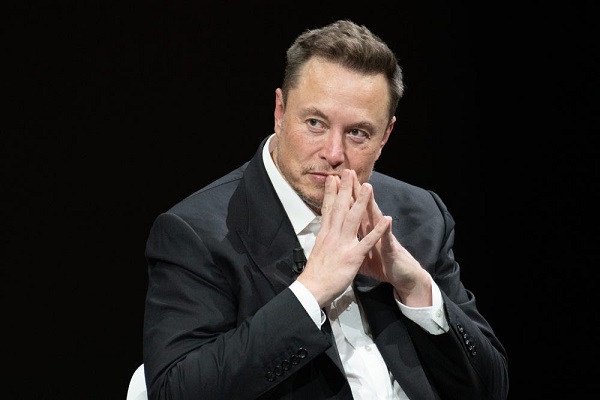Business
DOGE Theory

One of the most intriguing developments following Donald Trump’s election victory has been the announcement of Elon Musk and Vivek Ramaswamy’s Department of Government Efficiency, or DOGE. The initiative, which hopes to cut up to $2 trillion from the federal budget, has generated notable excitement, momentum, and memes. The world’s richest man and a successful biotech entrepreneur, Ramaswamy, have revitalized what seemed to be a mostly dormant libertarianism, drawing on the inspiration of Milton Friedman and promising to slash the bureaucracy to the bone. But what are its prospects for real-world success?
Elon Musk is our era’s most gifted entrepreneur, having revolutionized several industries and run multiple major companies. But the private sector operates on radically different principles than the public sector, which has a way of stalling or disarming even the most determined efforts. I foresee three potential impediments to DOGE’s success.
First is the problem of authority. While President-elect Trump has dubbed the effort the “Department of Government Efficiency,” it is not a government department at all. Rather, Musk and Ramaswamy will remain in the private sector and preside over what is, in effect, a blue-ribbon committee providing recommendations to the president and to Congress about potential cuts. In practice, though, blue-ribbon committees are often where ideas go to die. Politicians who feel the need to “do something” about a given problem often establish such committees to create the perception of action, which masks their true desire or, at least, the eventual result: inaction.
DOGE’s challenge will be to translate its recommendations into policy. It is almost certain that an entrepreneur of Musk’s ambition will not be content with writing a report. His and Ramaswamy’s task, then, is to persuade the president and the director of the Office of Management and Budget to enact real (and politically risky) cuts, and, if possible, to persuade Congress to abolish entire departments, such as the Department of Education, in the face of left-wing backlash.
The second problem for Musk and Ramaswamy is public opinion. Libertarians and small-government conservatives have long promised to reduce the size of government; one reason that they have never done so is that federal programs and agencies are generally popular. All of the major federal departments, with the exception of the IRS, the Department of Education, and the Department of Justice, have net-positive favorability numbers. Congressional members, even conservative Republicans, fear that slashing these departments would expose them to savage criticism from the Left and backlash from voters. They know that Americans complain about the size of government in theory but oppose almost all spending cuts in practice—the key paradox that libertarians have been unable to resolve.
Musk and Ramaswamy have repeatedly appealed to the work of Argentinian president Javier Milei, who has dramatically reduced the number of departments and created flashy video clips of himself stripping down organizational charts and yelling, “Afuera!” But what is possible in Argentina, which has been mired in a decades-long economic crisis, may not be achievable in the United States, which is much more stable, and, consequently, may not have the appetite for such dramatic action.
Which brings us to the problem of politics. Sending a rocket into space requires mastery over physics, but cutting government departments requires mastery over a more formidable enemy: bureaucracy. As Musk and Ramaswamy will see, the relationship between would-be reformers and Congress is vastly different from that between a CEO and a board of directors. To succeed, Musk and Ramaswamy must persuade a group of politicians, each with their own interests, to assume a high level of risk.
DOGE’s first task—identifying the budget items to cut—is the easy part. The hard part will be actually cutting them. They will have to convince Congress, which, for nearly 100 years, has refused to reduce the size of government, even when that notion had bipartisan support, as it did during the presidency of Bill Clinton, who promised that “the era of big government is over.”
This does not mean that DOGE cannot succeed. Though there may not be an appetite for a $2 trillion reduction in government spending, there is a hunger for targeted cuts that would strip the federal government of hostile ideologies that have made our institutions dysfunctional and our national life worse. For example, slashing grant funding for critical race theory would likely win support from voters; cutting the budget for USDA meat inspectors would not, and, given opportunity costs, would probably prove unproductive as well.
Perhaps the name of this committee—the Department of Government Efficiency—is also slightly off the mark. The problem is not only about efficiency, which suggests quantity, but about orientation, which implies quality. The federal government has long been captured by ideologies that misdirect its efforts. Simply making the bureaucracy more efficient will not solve that problem. DOGE must first determine what federal spending is worthwhile; from there, it can focus on creating “efficiencies.”
I hope that Musk and Ramaswamy can dispel my pessimism. Political realities have stifled countless reform efforts before now, and DOGE is an enterprise that would be difficult, if not impossible, under normal circumstances. But these are two remarkably talented men; if anyone is capable of shattering the mold, they can.
Please share your ideas, dissents, and thoughts in the comments. In the next newsletter, we will feature the best material in a“comment of the week” section. In the meantime, have a wonderful Thanksgiving.
2025 Federal Election
Does Canada Need a DOGE?

From the Fraser Institute
By Philip Cross
The legions of Canadians wanting to see government spending shrink probably look enviously at how Elon Musk’s Department of Government Efficiency (DOGE) is slashing some government programs in the United States, even if DOGE’s non-surgical chainsaw approach is controversial, to say the least.
Some problems are common to cutting any government’s spending. Ironclad job security for union employees with seniority means cuts are skewed disproportionately to junior staff still on probation, with the regrettable side effect of denying an injection of fresh blood into a sclerotic workforce. Cutting employees and not programs makes it easier for higher staffing to resume: as documented by Carleton University Professor Ian Lee in How Ottawa Spends, even prolonged bouts of austerity do not derail government spending from long-term trend of higher growth. Across the board cuts do not allow for the surgical removal of redundant or inefficient programs and poor performing employees.
Canada has some unique problems with federal government spending. Savoie documents how 41 per cent of federal civil servants are located in Ottawa, versus 16 per cent in Washington and 19 per cent in London, despite Canada having the most decentralized federation in the G7. The concentration in Ottawa partly reflects the exceptional influence exerted by central agencies on all departments. As well, University of Cambridge Professor Dennis Grube found Canada’s civil service was the most resistant to public scrutiny and the most risk adverse in a comparative study of public servants in the U.S., the United Kingdom, Australia, New Zealand and Canada.
Canada’s federal employees are among the most expensive anywhere. The average civil servant costs taxpayers $146,500 a year including all salary, benefits and costs such as computers and training. Multiplying this average cost by 366,316 federal employees yields a total labour bill of $53.7 billion, not including other spending such as $17.8 billion on consultants. All the recent increase in the ranks of the civil service happened in Justin Trudeau’s tenure, expanding 38.5 per cent after Stephen Harper had cut them 9 per cent between 2010 and 2015 in his determination to balance the budget.
While the cost of government employees has risen sharply, the services they provide to the public are dwindling as government spending increasingly is devoted to managing its unwieldy and bloated bureaucracy. As Savoie observes, unions like to paint civil servants as providing essential services such as food inspectors and rescue workers, when in reality most are involved in a vast web of “policy, coordination, liaison, and performance evaluation units.” The fastest growing occupations in the federal government are in administrative services and program administration, whose share of jobs rose from 25.1 per cent in 2010 to 31.9 per cent in 2023 according to the latest report from the Treasury Board.
A chronic problem is the fierce defense offered by public service unions in “protecting non-performers and insulating the public sector from effective outside scrutiny” as Savoie wrote. The refusal to acknowledge and root out non-performers depresses the morale of the average civil servant who’s unfairly tarred with the reputation of a minority. It also motivates the across-the-board chainsaw approach of DOGE, which critics then decry as not discriminating between good and bad employees. The latter could easily be targeted by senior managers, who know exactly who the non-performers are but cannot be bothered with the years of documentation and bureaucratic headaches needed to get rid of them. The cost of poor performers is substantial; if even 10 per cent of the civil service was eliminated as redundant non-performers, the government would save $5.4 billion a year. Potential savings are likely well over $10 billion.
The federal government potentially has enormous leverage in negotiating civil service pay and getting rid of non-performers, because it can unilaterally change the federal pension plan without negotiating with public-sector unions. The federal pension plan is so generous that it’s referred to as the “golden handcuffs” that tie employees to their jobs irrespective of their pay or working conditions. To protect their lucrative pensions, unions inevitably would be willing to make concessions that substantially lower the burden on Canada’s taxpayers and still improve morale within the civil service.
2025 Federal Election
Don’t double-down on net zero again

From the Fraser Institute
In the preamble to the Paris Agreement, world leaders loftily declared they would keep temperature rises “well below 2°C” and perhaps even under 1.5°C. That was never on the cards—it would have required the world’s economies to effectively come to a grinding halt.
The truth is that the “net zero” green agenda, based on massive subsidies and expensive legislation, will likely cost more than CAD$38 trillion per year across the century, making it utterly unattractive to voters in almost every nation on Earth.
When President Trump withdrew the United States from the Paris Climate Agreement for the first time in 2017, then-Canadian Prime Minister Justin Trudeau was quick to claim the moral high ground, declaring that “we will continue to work with our domestic and international partners to drive progress on one of the greatest challenges we face as a world.”
Trudeau has now been swept from the stage. On his first day back in office, President Trump signed an executive order that again begins the formal, twelve-month-long process of withdrawing the United States from the Paris Agreement.
It will be tempting for Canada to step anew into the void left by the United States. But if the goal is to make effective climate policy, whoever is Canada’s prime minister needs to avoid empty virtue signaling. It would be easy for Canada to declare again that it’ll form a “coalition of the willing” with Europe. The truth is that, just like last time, that approach would do next to nothing for the planet.
Climate summits have generated vast amounts of attention and breathless reporting giving the impression that they are crucial to the planet’s survival. Scratch the surface, and the results are far less impressive. In 2021, the world promised to phase-down coal. Since then, global coal consumption has only gone up. Virtually every summit has promised to cut emissions but they’ve increased almost every single year, and 2024 reached a new high.
Way before the Paris Agreement was inked, the Kyoto Protocol was once sold as a key part of the solution to global warming. Yet studies show it achieved virtually nothing for climate change.
In the preamble to the Paris Agreement, world leaders loftily declared they would keep temperature rises “well below 2°C” and perhaps even under 1.5°C. That was never on the cards—it would have required the world’s economies to effectively come to a grinding halt.
The truth is that the “net zero” green agenda, based on massive subsidies and expensive legislation, will likely cost more than CAD$38 trillion per year across the century, making it utterly unattractive to voters in almost every nation on Earth.
The awkward reality is that emissions from Canada, the EU, and other countries pursuing climate policies matter little in the 21st century. Canada likely only makes up about 1.5 per cent of the world’s emissions. Add together Canada’s output with that of every single country of the rich-world OECD, and this only makes up about one-fifth of global emissions this century, using the United Nations’ ‘middle of the road’ forecast. The other four-fifths of emissions come mostly from China, India and Africa.
Even if wealthy countries like Canada impoverish themselves, the result is tiny — run the UN’s standard climate model with and without Canada going net-zero in 2050, and the difference is immeasurable even in 2100. Moreover, much of the production and emissions just move to the Global South—and even less is achieved.

One good example of this is the United Kingdom, which—like Prime Minister Trudeau once did—has leaned into climate policies, suggesting it would lead the efforts for strong climate agreements. British families are paying a heavy price for their government going farther than almost any other in pursuing the climate agenda: just the inflation-adjusted electricity price, weighted across households and industry, has tripled from 2003 to 2023, mostly because of climate policies. This need not have been so: the US electricity price has remained almost unchanged over the same period.
The effect on families is devastating. Had prices stayed at 2003 levels, an average family-of-four would now be spending CAD$3,380 on electricity—which includes indirect industry costs. Instead, it now pays $9,740 per year.
Rising electricity costs make investment less attractive: European businesses pay triple US electricity costs, and nearly two-thirds of European companies say energy prices are now a major impediment to investment.
The Paris Treaty approach is fundamentally flawed. Carbon emissions continue to grow because cheap, reliable power, mostly from fossil fuels, drives economic growth. Wealthy countries like Canada, the US, and European Union members have started to cut emissions—often by shifting production elsewhere—but the rest of the world remains focused on eradicating poverty.
Poor countries will rightly reject making carbon cuts unless there is a huge flow of “climate aid” from rich nations, and want trillions of US dollars per year. That won’t happen. The new US government will not pay, and the other rich countries cannot foot the bill alone.
Without these huge transfers of wealth, China, India and many other developing countries will disavow expensive climate policies, too. This potentially leaves a rag-tag group led by a few Western European progressive nations, which can scarcely afford their own policies and have no ability to pay off everyone else.
When the United States withdrew from the Paris Agreement in 2017, Canada’s doubling down on the Paris Treaty sent the signal that it would be worthwhile spending hundreds of trillions of dollars to make no real difference to temperatures. We fool ourselves if we pretend that doing so for a second time will help the planet.
We need to realize that fixing climate change isn’t about sanctimonious summits, lofty speeches, and bluster. In coming weeks I’ll outline the case for efficient policies like innovation, adaptation and prosperity.
-

 Business2 days ago
Business2 days agoTrump threatens additional 50% tariffs on China, urges ‘patience’
-

 2025 Federal Election19 hours ago
2025 Federal Election19 hours agoWATCH: Massive Crowd for Historic Edmonton Poilievre Rally
-

 Alberta2 days ago
Alberta2 days agoProvince introducing “Patient-Focused Funding Model” to fund acute care in Alberta
-

 International2 days ago
International2 days agoUN committee urges Canada to repeal euthanasia for non-terminally ill patients
-

 MacDonald Laurier Institute2 days ago
MacDonald Laurier Institute2 days agoRushing to death in Canada’s MAiD regime
-

 2025 Federal Election20 hours ago
2025 Federal Election20 hours agoAn In-Depth Campaign Trail “Interview” With Pierre Poilievre
-

 2025 Federal Election2 days ago
2025 Federal Election2 days agoMark Carney Comes to B.C. and Delivers a Masterclass in Liberal Arrogance
-

 2025 Federal Election20 hours ago
2025 Federal Election20 hours agoHarper Endorses Poilievre at Historic Edmonton Rally: “This Crisis Was Made in Canada”








